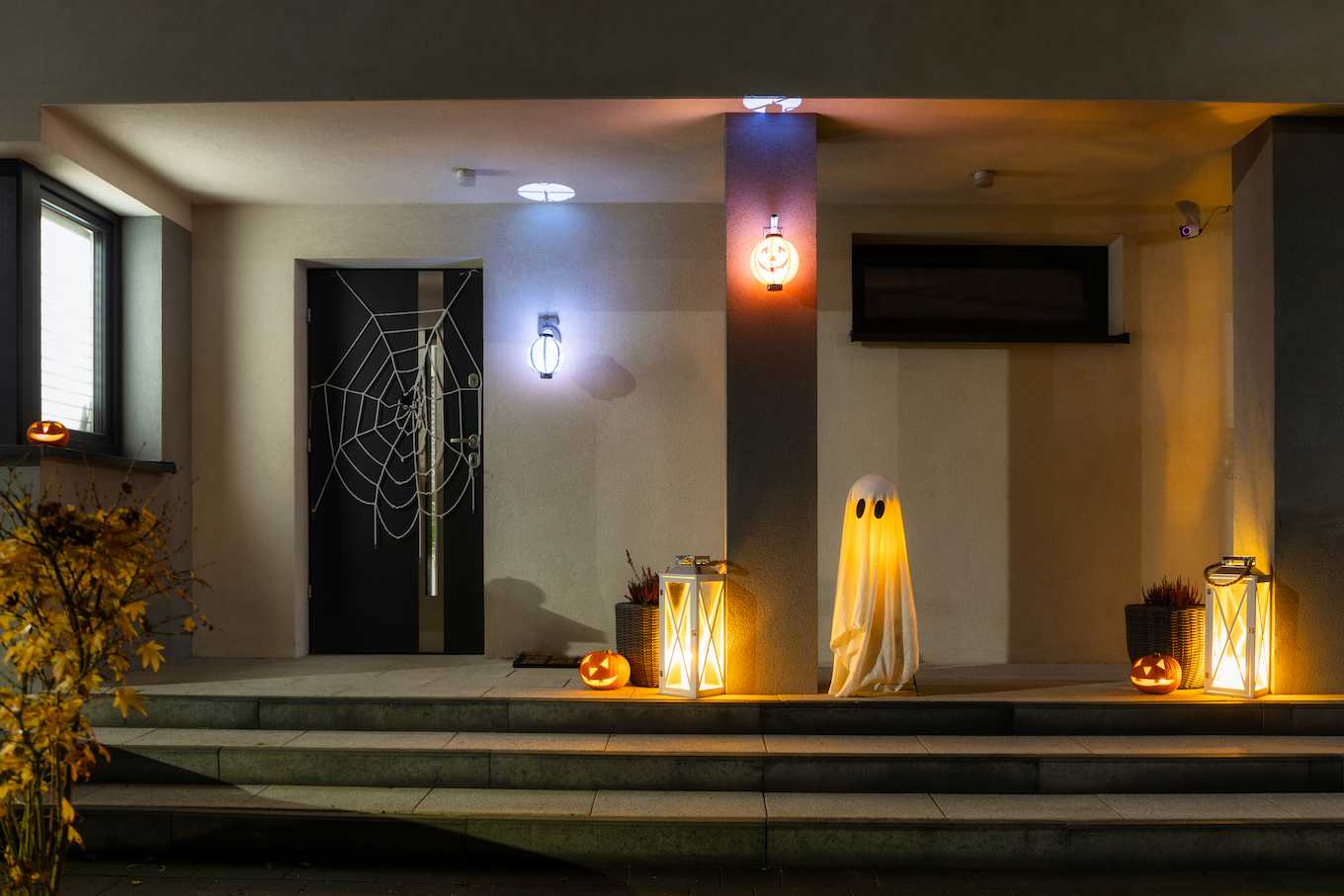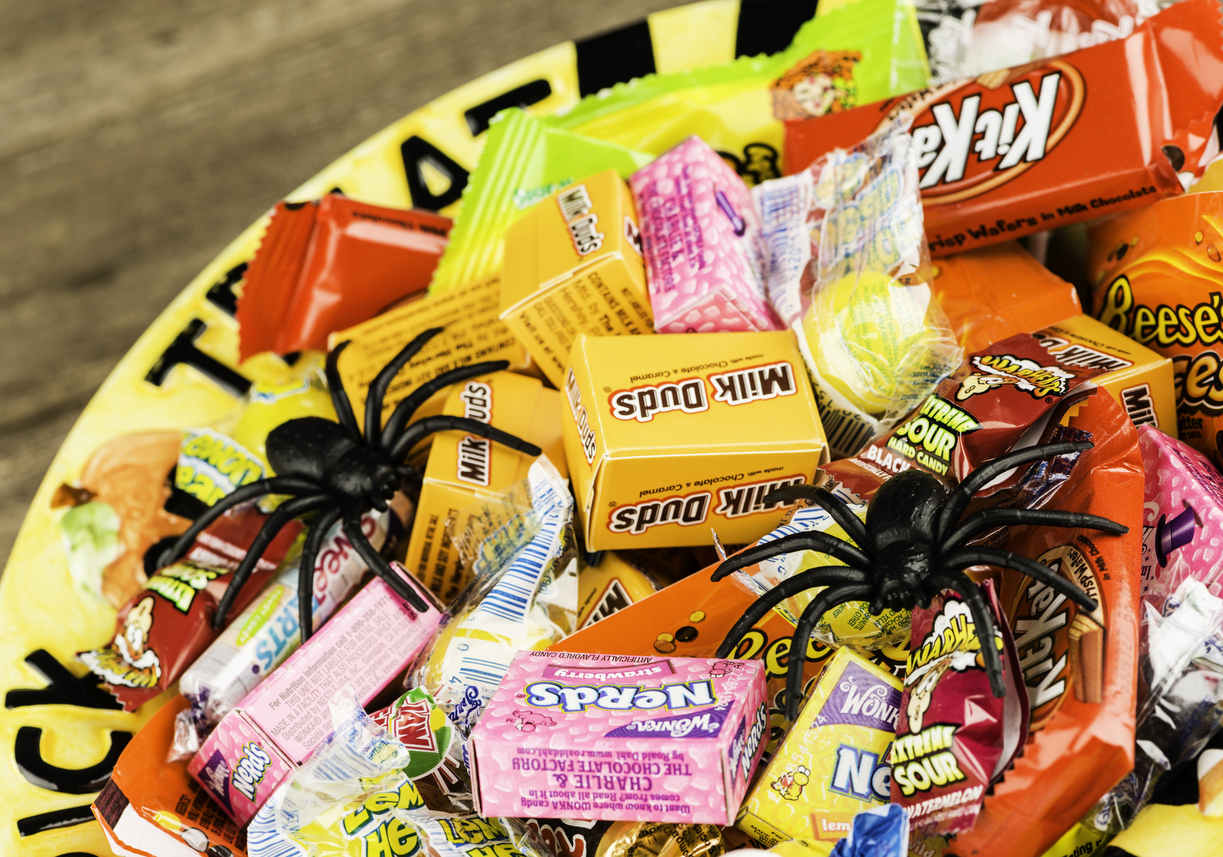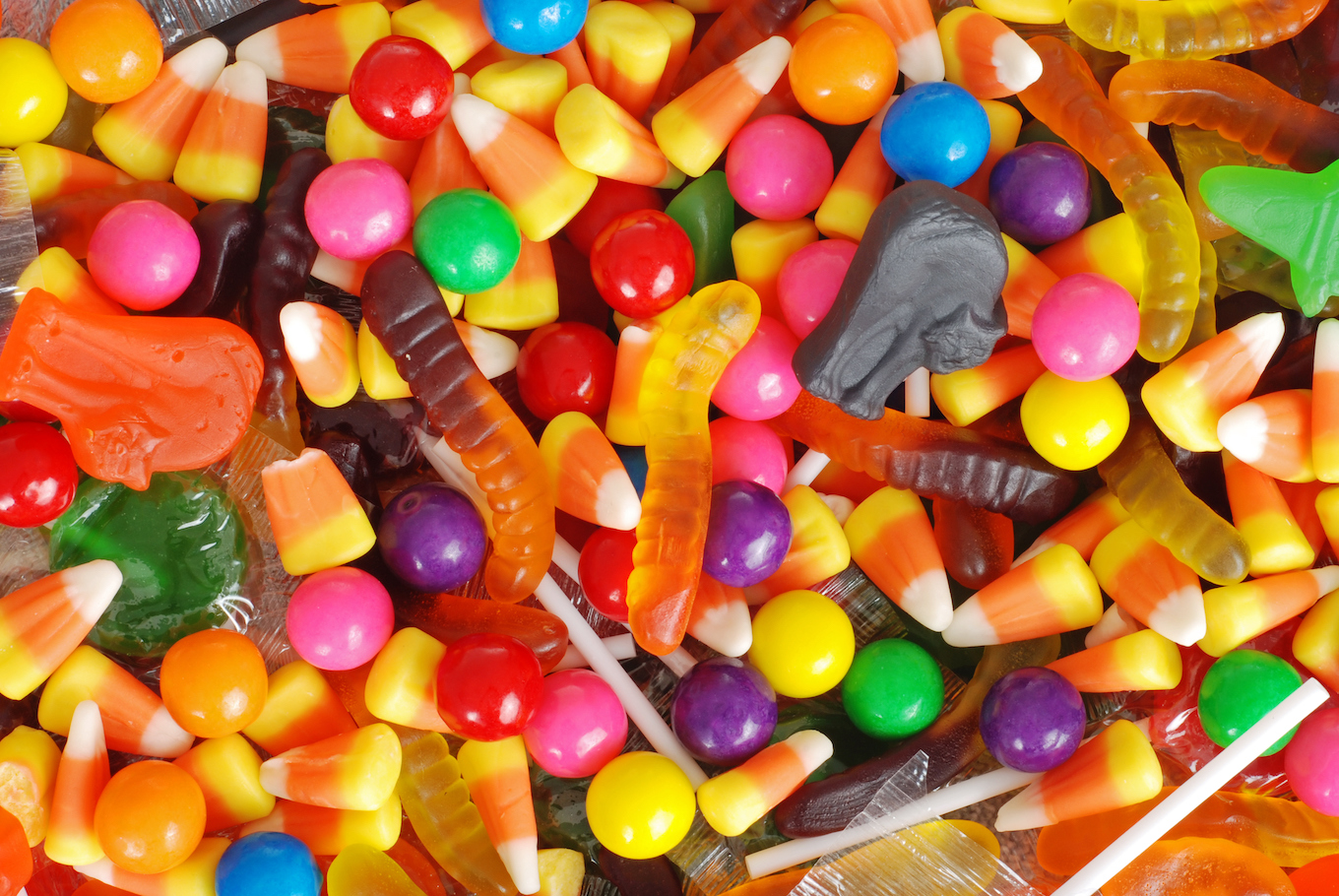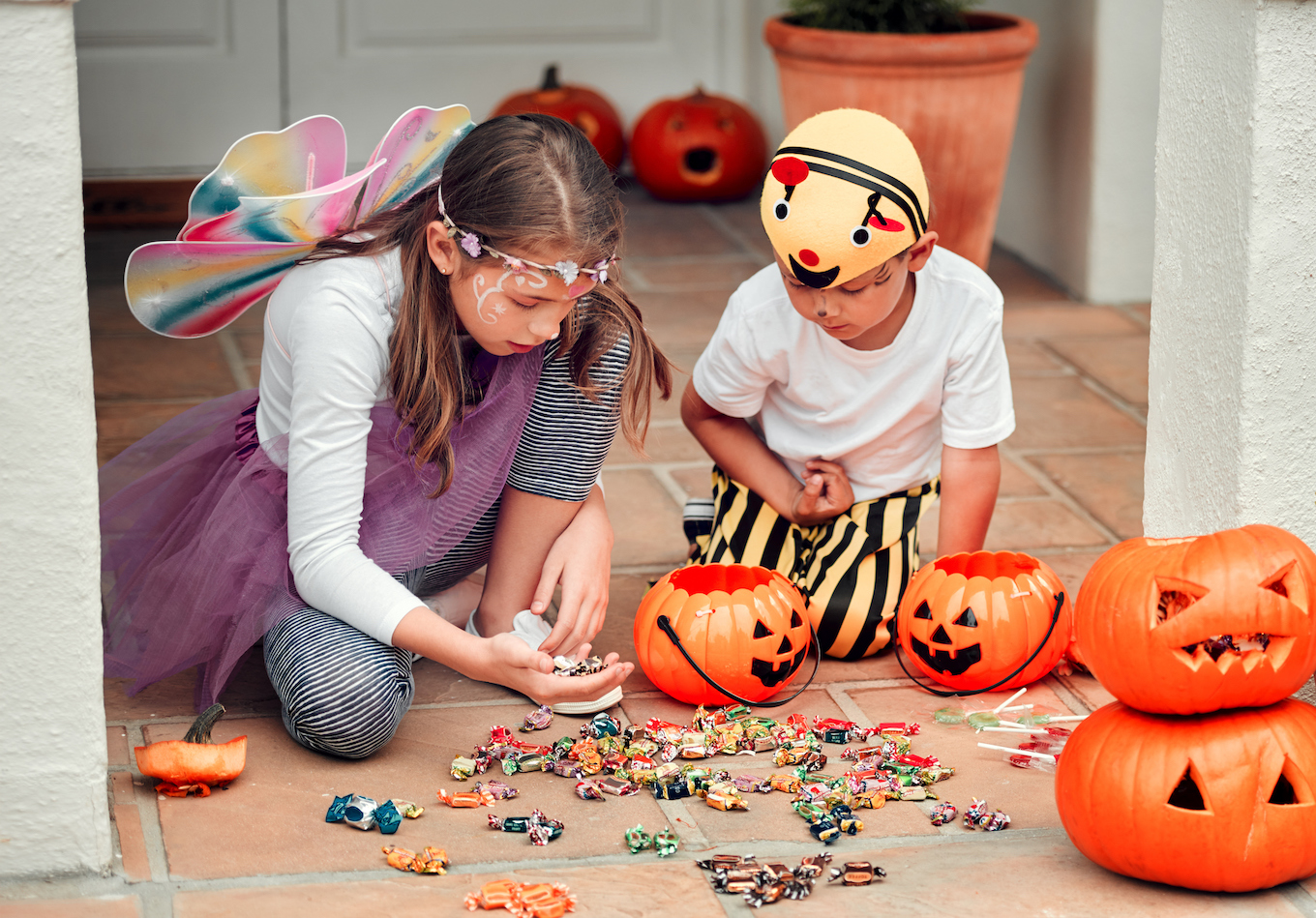
Going trick-or-treating on Halloween is an exciting event for most families in America. Kids and adults look forward to it and all of the spooky season festivities for months. Getting dressed up is so much fun, checking at all the neighborhood Halloween decorations is so cool, and who doesn’t love getting free candy and treats? But to make sure Halloween remains a time for innocent family fun and to keep the night free from any issues, there are some safety tips to implement while trick-or-treating — or even when you’re handing out candy at home.
In a perfect world, we wouldn’t have to worry about these things, but it’s better to be safe and prepared. That way the night can go as smoothly as possible.
Don't eat any candy while walking around.

According to the South Coast Medical Group, parents shouldn’t allow children to eat the candy while in the middle of trick-or-treating. It’s important to inspect the candy first, and “walking around in the dark will impair your ability to see the candy clearly.” Instead, parents can bring a snack or some treats from home to tide the child over.
Make sure everyone is visible at all times.

Trick-or-treating is traditionally a nighttime activity, and it’s important to make sure that passing cars can see us. Use reflective tape on costumes, supply kiddos with glow bracelets, or even get light-up trick-or-treat buckets. Carrying flashlights also works.
Going out earlier is better.

According to medical journal JAMA Pediatrics, there’s a 43% higher pedestrian fatality rate on Halloween. And the risk is highest around 6 p.m. Think about starting trick-or-treating earlier so you’re more visible to passing cars. Some cities even start in the afternoon. Daylight may not fit the Halloween vibe as much, but it makes for much safer trick-or-treating.
Some local businesses do trick-or-treat events.

If you want to start trick-or-treating on the earlier side, check to see if any local businesses are doing Halloween events. Often, downtown shops, local malls, and shopping centers organize family-friendly gatherings for the holiday starting around 3 p.m.
More from CafeMom: How Raising a Spooky Kid Brought Back All My Childhood Halloween Magic
Use sidewalks and designated crossings.

No matter what time of the day we’re out, we should always stick to pedestrian rules and encouraging our kids to do the same. TikToker and doctor @beachgem10 advised that parents stick to using sidewalks and crosswalks because “it’s hard to see you when you’re crossing in between cars.” Also, don’t forget to look both ways.
Maybe skip the mask.

Instead of a costume with a full-face mask that could obscure a child’s vision, consider using face paint instead, says Safe Kids Worldwide. If a child insists upon wearing a mask, have them take it off while crossing roads so they can be fully aware of what’s going on around them.
Check the registry of offenders.

Checking the National Sex Offender Public Website can help determine which neighborhood houses we don’t want our children to go to. This is especially important if any of our older kids are trick-or-treating with just their friends. Discuss any “do not knock” doors ahead of time.
Skip houses with porch lights off.

Homeowners who don’t want to participate in trick-or-treating for whatever reason usually leave their porch lights off that night, notes Apartment Therapy. Make sure kiddos know that we only visit houses that are lit up. Those are the ones who welcome trick-or-treaters.
Try a trunk-or-treat event.

Some people dislike trunk-or-treats because they’re so different from what we grew up doing. But TikToker @veganelaine said she appreciates that they provide a safe space for children. They can still collect candy without the fear of being hit by a car.
Trunk-or-treats usually take place in school, church, or community center parking lots. Participating families decorate their open car trunks and hand out candy to the other families. Check online to see if any events are taking place near you.
Look out for allergens.

For parents whose kids have allergies, check those wrappers for hidden allergens. Nuts, eggs, dairy, and gluten are present in a lot of popular Halloween candies. Additionally, for those handing out candy, maybe consider some allergy-free options or even small toys to hand out to kids to include everybody.
Know what different colored pumpkins could mean.

We’re used to seeing porches decorated with orange pumpkins, but seeing a teal pumpkin or blue pumpkin could carry a special meaning. According to Parade, teal pumpkins signify food allergies. Homes with teal pumpkins may be offering allergy-friendly treats. And a child carrying a teal pumpkin bucket may trying to avoid certain allergen-filled candies.
Parade reported that blue pumpkins are used to represent those on the autism spectrum. Be patient with trick-or-treaters who may not make eye contact, say thank you, or even say “Trick-or-treat” like they’re “supposed” to.
Parents can use the different-colored pumpkins to help signify any accommodations their children may need.
Dress for the weather.

It’s never fun for a child to have to cover up their costume with a coat if it’s cold or rainy that evening, but dressing for the weather is important. Encourage children to pick a Halloween costume that’s already long-sleeved or has a jacket or cape for warmth if you live in a colder climate. That way we avoid the fight before it even happens.
Pay attention to possible choking hazards.

TikTok doctor @drjihanmd said trick-or-treaters under 4 years old shouldn’t eat certain candies to avoid choking hazards. Her list of no-gos include M&Ms, Reese’s Pieces, Jolly Ranchers, jawbreakers, Tootsie Pops, Blow Pops, candy corn, Milk Duds, and gummy bears.
Inspect the candy once at home.

In a TikTok video, St. Elizabeth Healthcare let parents know what to watch out for when inspecting their kids’ candy. In addition to removing choking hazards, “discard anything tampered with, torn or unsealed.” Homemade treats aren’t necessarily worth the risk either.
Practice good oral hygiene.

To avoid cavities, encourage children to brush their teeth well after a night of eating sweets, but don’t brush immediately after consuming sugar. Golden State Dentistry recommends waiting at least 30 minutes to an hour before brushing to avoid damaging the tooth enamel. Instead, drink a glass of water right after consuming the candy.








